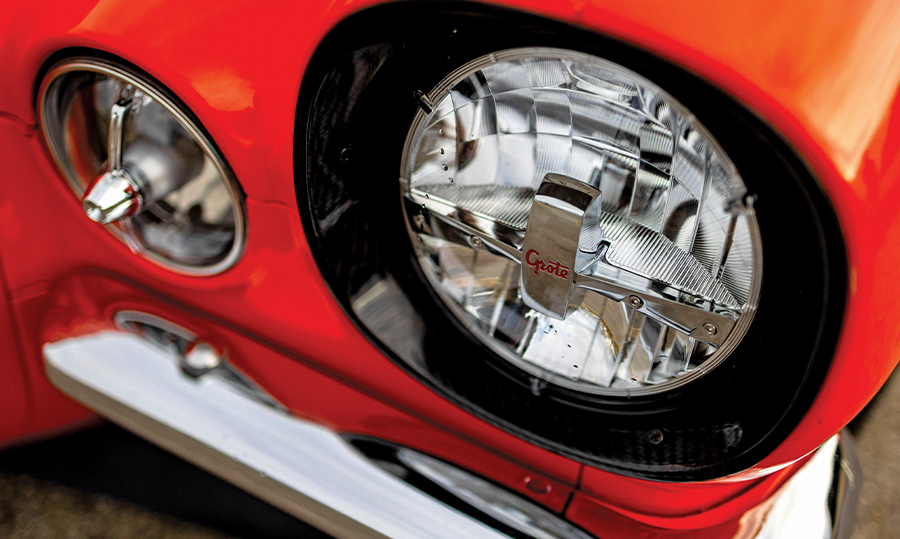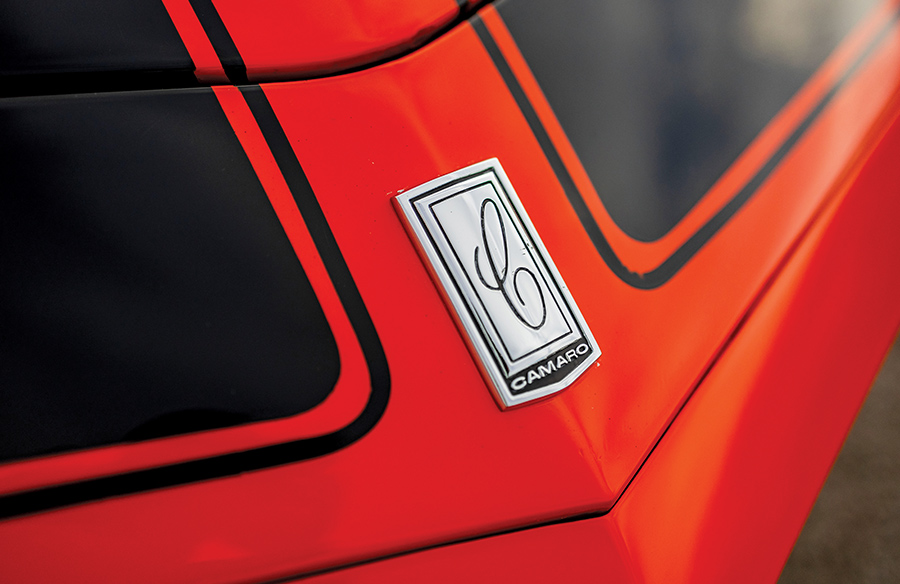 FEATURE
FEATURE
 Images by Patrick Lauder
Images by Patrick Lauderuring Mike Casey’s high school days, the muscle car and hot rod magazine world was thriving. It was the early to mid ’80s and magazine racks were stuffed with automotive publications battling for newsstand notoriety. At the same time, the editorial staffs were in stiff competition to get the coolest cars in their magazine first. Yeah, feature editors were trying to scoop one another when they caught wind of a high-profile car being built. They’d photograph the car and write up the story before the paint had fully dried. It was a time when Hot Rod magazine was king, but with the muscle car craze in full swing, there were plenty of titles available for young hot rodders to grip their greasy hands on, and at $1.50 a pop, high-school-age kids were able to spend their lunch money on a magazine over at the local 7-Eleven newsstand rack and forego the 79 cent bean and cheese burrito basking under the heat lamps. We here at ACP are not nutritionists, but it’s safe to say the magazine was likely a healthy alternative to that microwaved artery-clogger.
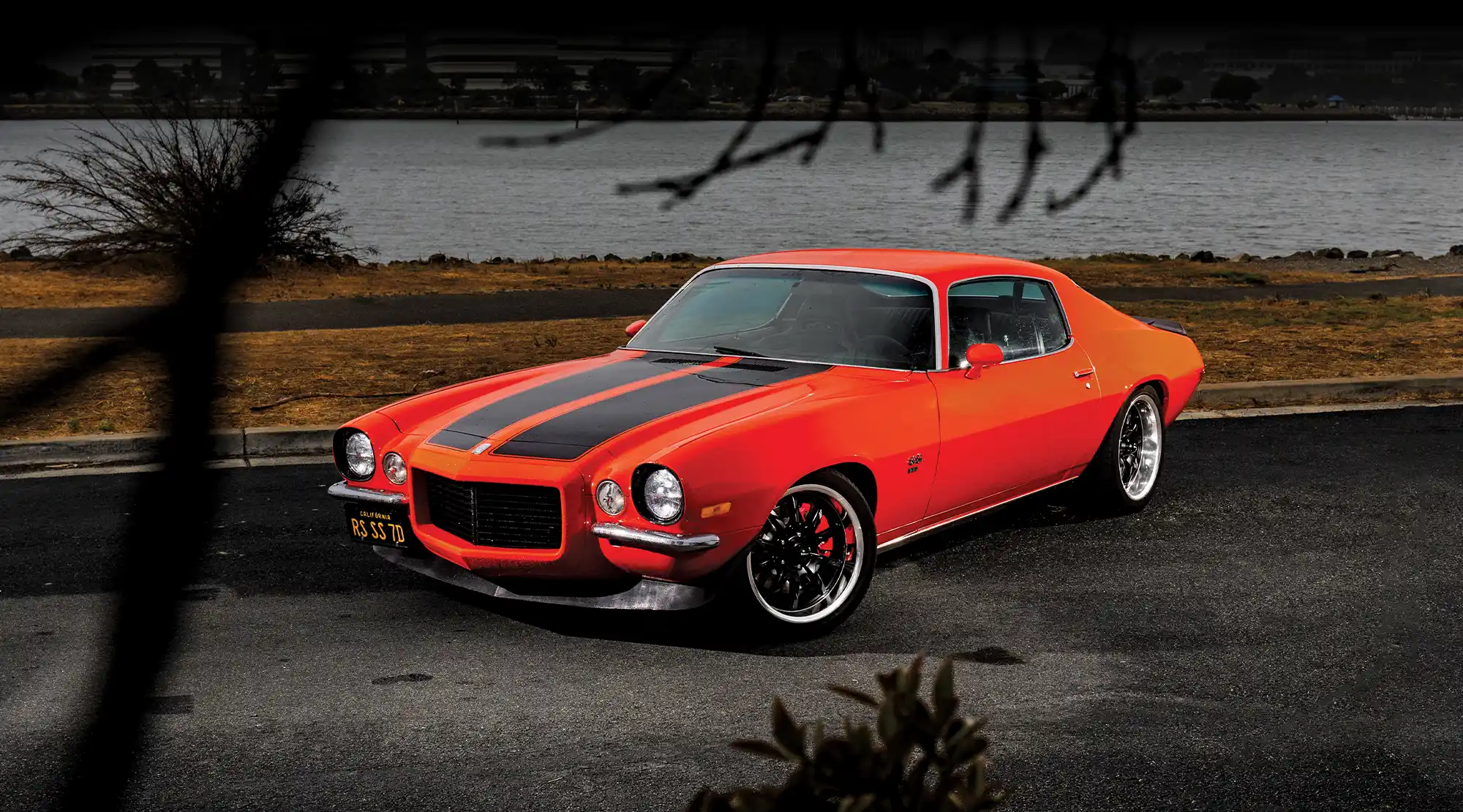
A few years back, he got the itch to pick up a piece of old-school muscle and went to look at an all-original ’68 Pontiac GTO for sale but while walking around the dealer showroom an orange ’70 Camaro caught his attention. The second-gen took him back to the car he’d always wanted in his late-teenage years. Needless to say, he took the Camaro home and left the Goat behind.
Michael admits the Camaro was well worn. The suspension was shot, braking was decent but not great, the four-speed transmission whined badly in Third gear, the transmission would grind if not shifted delicately and with just the right touch, and the exhaust was obnoxiously loud. “The car was like a shark—it had to be moving forward at all times or it would overheat,” Michael laughingly says. “It definitely needed a lot of TLC, but I still loved it and had plans to transform it from a lazy classic into a corner-hugging G-machine.
“Keith Smith of Custom Works Performance in Chico, California, had a blue second-gen Camaro with wide tires on all four corners. It was the template for the build direction I wanted to take my Camaro,” Michael says. “Smith’s Camaro reminded me of the Trans-Am–style cars I saw in the magazines back in the day. I wanted my car to look and handle just like his, so I got with Smith and asked if he’d build my Camaro to mimic all the things he had done to his car. Smith was on board and soon began the transformation.”

With that blue Camaro being the inspiration for Michael’s, Smith ripped out the obsolete stock suspension and bolted in a Custom Works 2G suspension system. Out back is a heavy-duty leaf spring rear suspension consisting of Viking Performance double-adjustable shocks, ¾-inch sway bar, and Panhard bar. Up front, SPC Performance control arms accommodate Viking coilover shocks, 500-pound lowering springs, and Custom Works Performance 1.25-inch sway bar. A pair of Custom Works subframe connectors tie it all together for one significant suspension upgrade.
A PSC 12:1 steering box offers quicker performance steering over stock and a Custom Works C5 Corvette conversion brake kit relies on 13-inch rotors and two-piston calipers up front while 12-inch rotors and single-piston calipers ride out back. A Right Stuff booster produces efficient braking coupled with exceptional pedal feel.
With the original small-block on life support, an LS3 was sourced from a dealership in Minnesota. Per Smith’s recommendation, a Brian Tooley Racing Stage 3 cam was the only internal upgrade as a stock LS3 offers plenty of power for Michael’s needs. A Holley mid-mount accessory drive system ensures stellar engine functionality while a Holley Terminator X fuel injection system keeps the combustion chambers quenched. While perusing the Holley website, Michael carted a set of 1⅞-inch headers, 3-inch exhaust, and a pair of mufflers—all members of the Blackheart family.

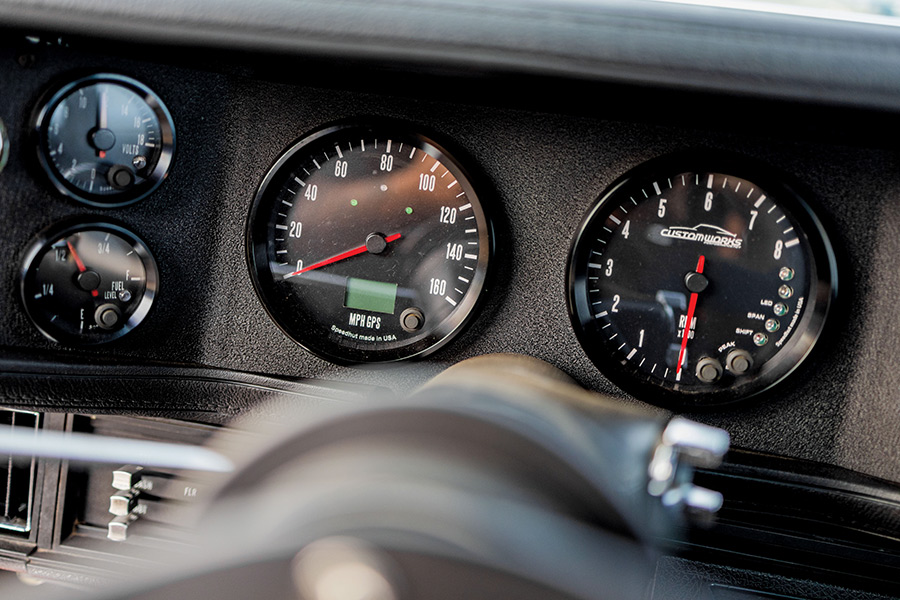
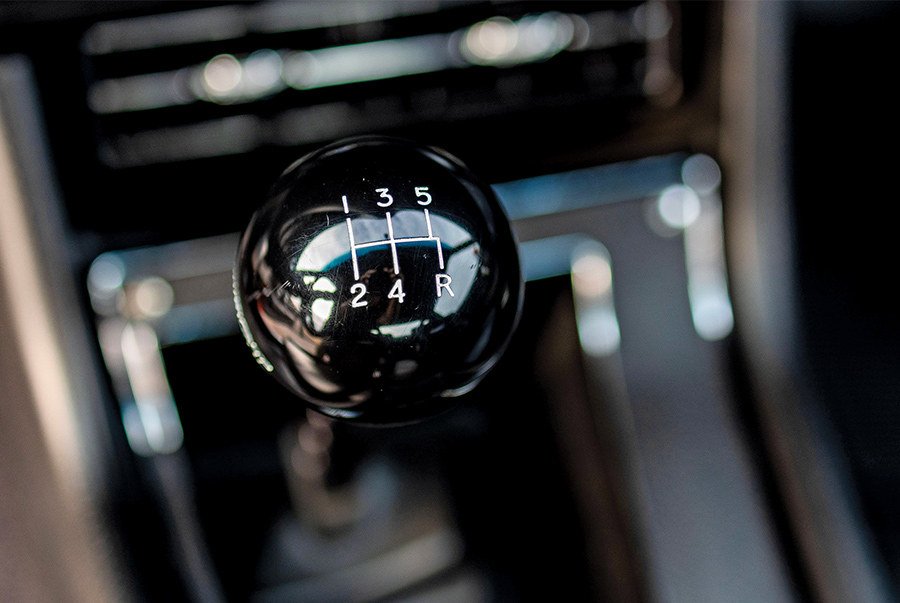
The interior retains its classic essence and most of the factory upholstery remains unchanged. The stock dash made way for a fresh piece from OER and is complemented by a set of Speedhut gauges that rest in a Custom Works custom gauge panel. For a comfortable driving experience, a Vintage Air A/C system ensures Michael stays cool while perched in those high-back Corbeau LG1 cloth-covered seats.
The exterior remains faithful to its ’70s lineage with no frills, no fancy fabrication, and no drama. The sole enhancement is the addition of an Anvil Auto carbon-fiber spoiler, providing a touch of flair. The bodywork and paint process were completed before Michael acquired the car, but he tells us the color is Chrysler Pumpkin Orange. Complementing the vivid hue are a set of 18-inch black Ridler 650 wheels wrapped in Hankook Ventus V12 rubber. The ensemble gives off a somewhat confrontational vibe and the notion this second-gen can take care of business on the track or autocross.
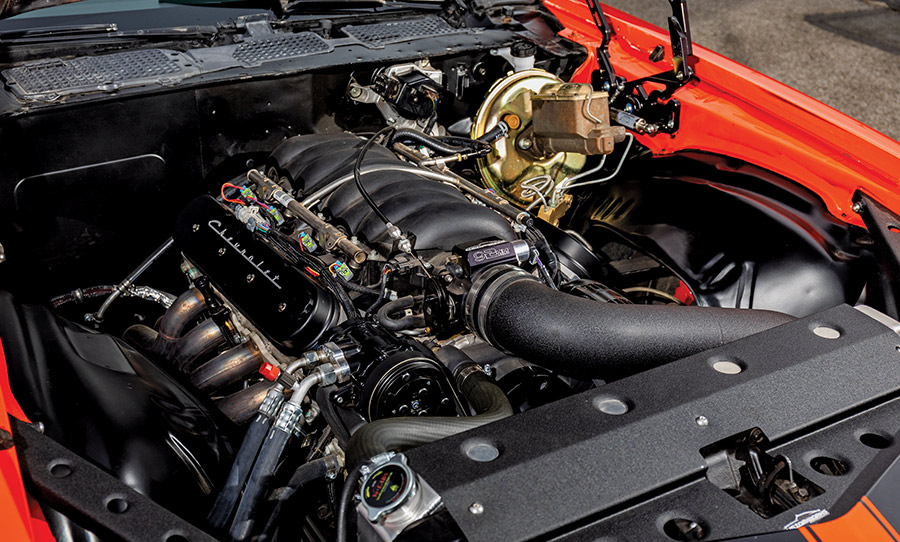
“The car is a blast to drive on the canyon roads and I even give the guys driving their exotics a run for their money,” Michael concludes. “I may not be able to keep up with a late-model Lamborghini pound for pound, but this heavy old Camaro does pretty damn well. I have to hand it to Keith Smith; the guy knows how to make a vintage muscle car do stuff vintage muscle cars were never meant to do—at least not this well.”


Vehicle: ’70 Chevy Camaro
Type: Chevrolet Performance LS3
Displacement: 376 ci
Compression Ratio: 10.7:1
Bore: 4.056
Stroke: 3.622
Cylinder Heads: Aluminum L92-style port
Rotating Assembly: Nodular iron crankshaft, powdered metal connecting rods, hypereutectic aluminum pistons
Camshaft: Brian Tooley Racing Stage 3
Induction: Factory intake manifold, Custom Works intake tube, K&N filter
Fuel Injection: Holley Terminator X
Valve Covers: Holley
Accessory Drive System: Holley Mid-Mount
Assembly: GM
Exhaust: Hooker stainless 1⅞-inch headers, Hooker Blackheart 3-inch exhaust and mufflers
Ancillaries: Griffin radiator, Custom Works closeout panel and fender braces, CVF hood hinges, trunk-mounted Optima RedTop battery
Output: 448 rwhp, 423 lb-ft
Transmission: TREMEC TKX five-speed
Clutch: Centerforce single-disc
Rear Axle: GM 12-bolt, posi, 3.31 gears
Chassis: Stock with Custom Works Performance subframe connectors
Front Suspension: Custom Works 2G kit, SPC adjustable control arms, Viking Performance coilover shocks, Custom Works 1.25-inch sway bar, PSC steering box
Rear Suspension: Custom Works leaf springs, ¾-inch adjustable sway bar, Custom Works springs, Viking Performance double-adjustable shocks
Brakes: Custom Works C5 Corvette conversion 13-inch rotors, two-piston calipers front, 12-inch rotors, one-piston calipers rear
Master Cylinder: Right Stuff
Wheels: Ridler 650, 18×8 front, 18×9.5 rear
Tires: Hankook Ventus V12 Evo2 245/35R18 front, 275/35R18
Seats: Corbeau LG1
Steering Wheel: Sparco
Shifter: Hurst
Dash: Stock with Custom Works gauge panel
Instrumentation: Speedhut
HVAC: Vintage Air
Stereo System: Alpine
Speakers: Alpine
Amplifiers: Alpine
Paint: Chrysler Pumpkin Orange
Rear Spoiler: Anvil
